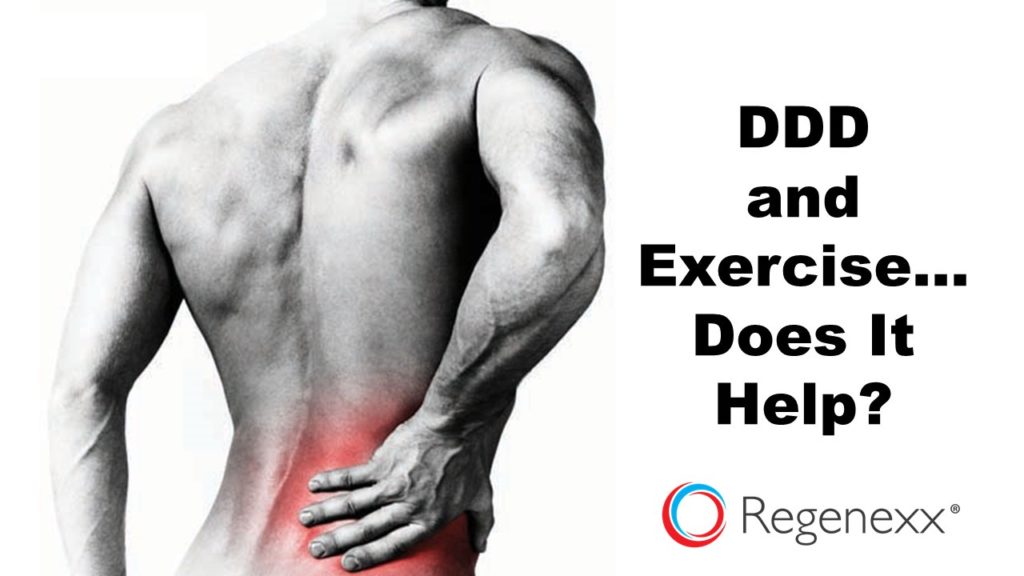DDD and Exercise…A Good Idea or a Bad Idea?
DDD and exercise…can it help in promoting healing? Exercise is again one of those inherently good things for your body, but in cases of Degenerative Disc Disease, are there types of exercise that help, and types to avoid? A recent study looks at the regenerative potential of a particular type of exercise in DDD patients.
Degeneration of the Discs is a normal part of aging like grey hair and wrinkles. For some people though, more disc degeneration takes place and this is what is referred to as Degenerative Disc Disease, or DDD. The discs are the shock absorbers between the vertebrae which also allow the spine to remain flexible in all of it’s range of motion, with all of the forces placed on it. Each disc has a tough outer covering, the annulous fibrosus, and a gel like center called the nucleus pulposus. In DDD, the inner gel-like material often loses it’s ability to hold on to water and becomes dried out, and the tough outer covering gets damaged due to wear and tear. The disc loses height and begins to collapse, causing more pressure on the bones which leads to bone spurs. At the same time, the whole spinal segment around the disc becomes unstable and moves too much causing degenerative instability. This last part accelerates the bone spurs and can cause the ligament inside the spinal canal, the ligamentum flavum, to get bigger and compress nerves which causes spinal stenosis. All of this can be painful, mostly due to the extra motion and pressure on nerves and the joints in the back of the spine called the facets, which occurs due to the decreased disc height. Additionally, though the disc itself can be torn and painful, the disc can additionally bulge, and press on nerves.
Low back pain is epidemic, and accounts for the largest percentage of missed work and significant health care costs today. Stabilizing exercises, like Axial loading exercise, places the resistance loaded in a way that places compressive emphasis on the spine, pelvis and hips, forcing many muscle groups to engage. Greater stability tends to equal less pain. The study looks at the regenerative potential of specific types of loading exercises in the intervertebral disc. They found that low dose (low frequency, high volume, high load) specific types of extension loading exercises appeared to induce some basic regenerative mechanisms, and that inversely, high frequency exercises of the same type added to the degeneration of the disc.
The Upshot? Exercise can be a good tool in working to manage pain in Degenerative Disc Disease by increasing stability. If significant improvement is not gained because the damage is too great, using your own platelets and stem cells have shown good results in addressing the physiopathology involved in DDD: bulging discs which irritate nerves, instability which leads to bone spurs, and painful facet joints.

If you have questions or comments about this blog post, please email us at [email protected]
NOTE: This blog post provides general information to help the reader better understand regenerative medicine, musculoskeletal health, and related subjects. All content provided in this blog, website, or any linked materials, including text, graphics, images, patient profiles, outcomes, and information, are not intended and should not be considered or used as a substitute for medical advice, diagnosis, or treatment. Please always consult with a professional and certified healthcare provider to discuss if a treatment is right for you.

